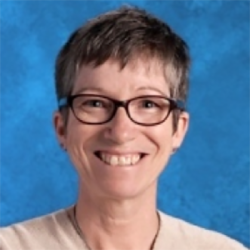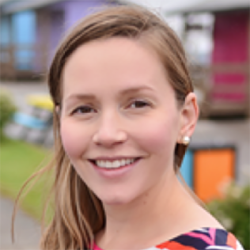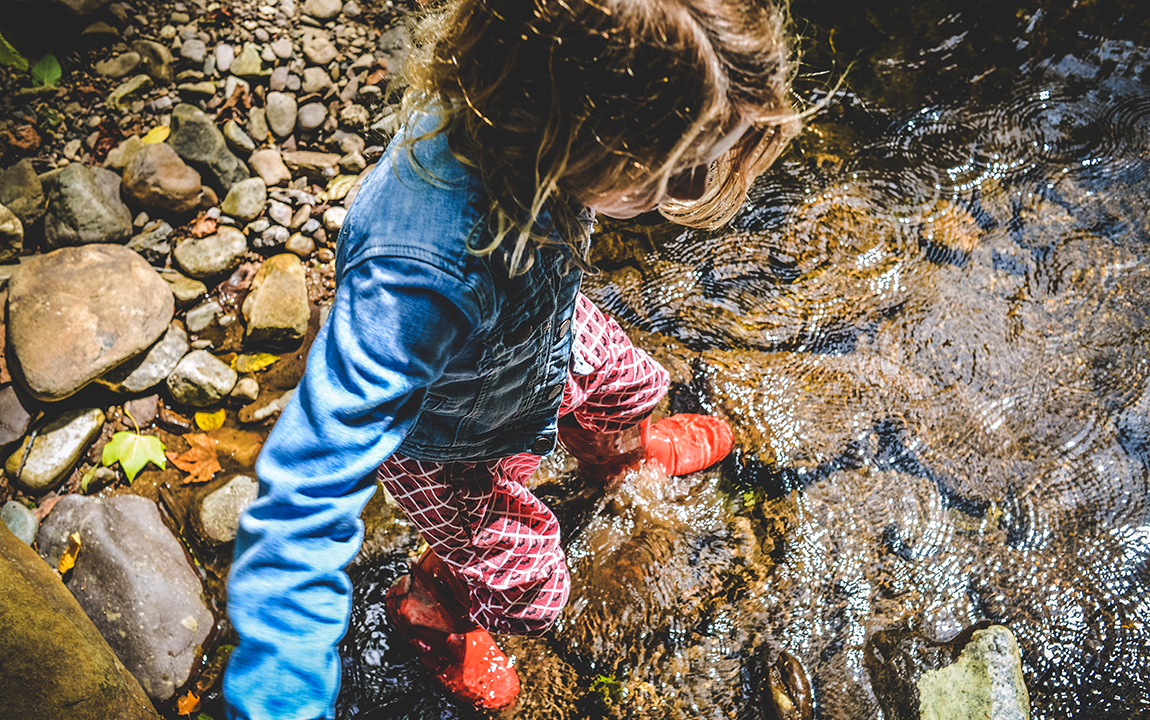
How did learning flow down the STREAM? That acronym means “Science, Technology, Reading, Engineering, Art, and Math” and this year we had a very successful in-depth PBL experience with our first and second graders, focused on improving the health of local rivers.
Our school has entered an exciting period of change. We are trying new things intended to create engaging, powerful, impactful and enjoyable learning experiences for students. This fall, we introduced Project Based Learning to our combined grade one and two class. Our goal: to foster a growth mindset and passion for mindful making, develop core competencies, and teach our students how to utilize design thinking in their approach to problems.
So, how did we do it?
Prior to introducing students to their project topic, we taught six maker lessons that applied design thinking by posing open-ended problems and tasks that encouraged them to challenge their own thinking while learning how to be effective collaborators and team members. At the heart of our cycle was empathy, which we used to focus the students on the task at hand: who are we helping, what do they need, and have we considered all perspectives?
Entry Events in the Community
Our project’s entry events were authentic community experiences that built background knowledge, while connecting students to the curriculum and the project. We visited local rivers and conservatories and discussed our impacts as humans on these environments. These experiences led to a project focused on an essential question that was co-created with instructional designers, the teacher and the students: “What might we create to improve the interactions between the Bow and Elbow Rivers and Calgarians?”
Sustained Inquiry
Meaningful learning in literacy, numeracy, science, art, and competency development were propelled by scaffolded, sustained inquiry. Questioning enriched student thinking and learning about interactions between river ecosystems and humans. Having a new K-4 draft concept-based curriculum to connect interests to learning outcomes provided significant opportunities for meaningful experiences to deepen and broaden learning. Exploring the microscopic world of invertebrates expanded our understanding and appreciation of life that exists beyond the clarity of a river water sample.
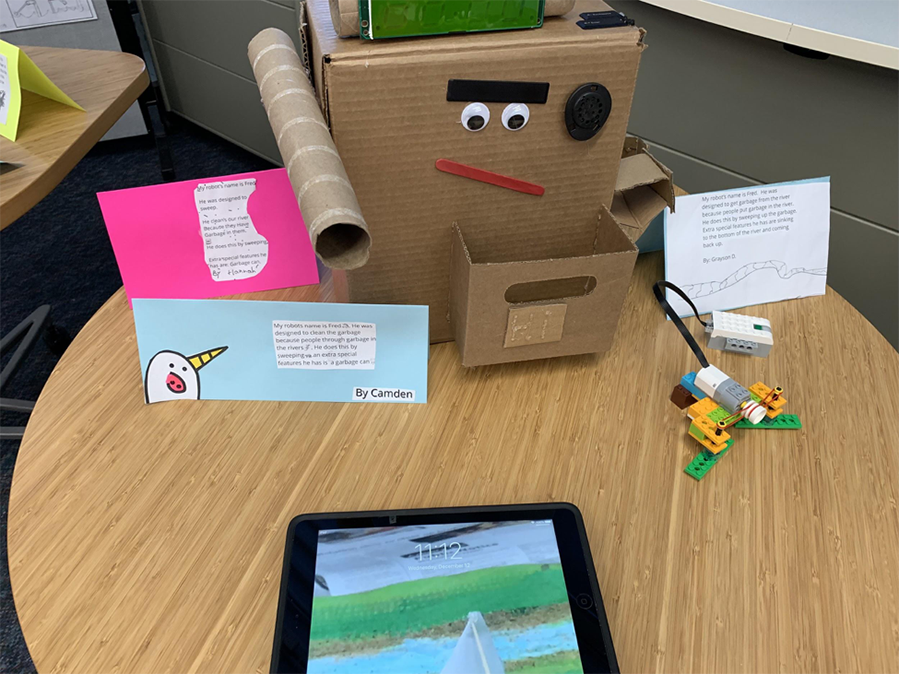
Design Thinking … and Making Robots!
With concerns for the health of our rivers, students applied the design thinking cycle to answer their essential question. Student groups were then given the opportunity to make unique products, and they wanted to design and build robots to clean the rivers by collecting trash. Our attempts to guide the students to alternative products to solve the deeper problem of chemical contaminants did not spark as much interest. Robots would be fun! We chose to honor student voice and choice and the spirit of play.
In groups, students co-created a series of blueprints to represent their ideas. We used a “Gallery Walk” protocol to allow the members to express and refine their ideas, resulting in a collaborative understanding of the product they would create together. Robots were the perfect opportunity to teach computational thinking. We flexibly planned to build a robot configuration that incorporated their designs. Digital literacy knowledge allowed the students to deepen their understanding of the functionality of their robot. With WeDo 2.0, the students chose to assemble a robotic arm to grab, a reel to gather, and a sweeper to collect waste. Combining the functional robot into their design happened naturally during the creative construction process. Improvements continued with critique and revision, resulting in products beyond our expectations. In writing, the students introduced their robot and then reflected on its features and functions.
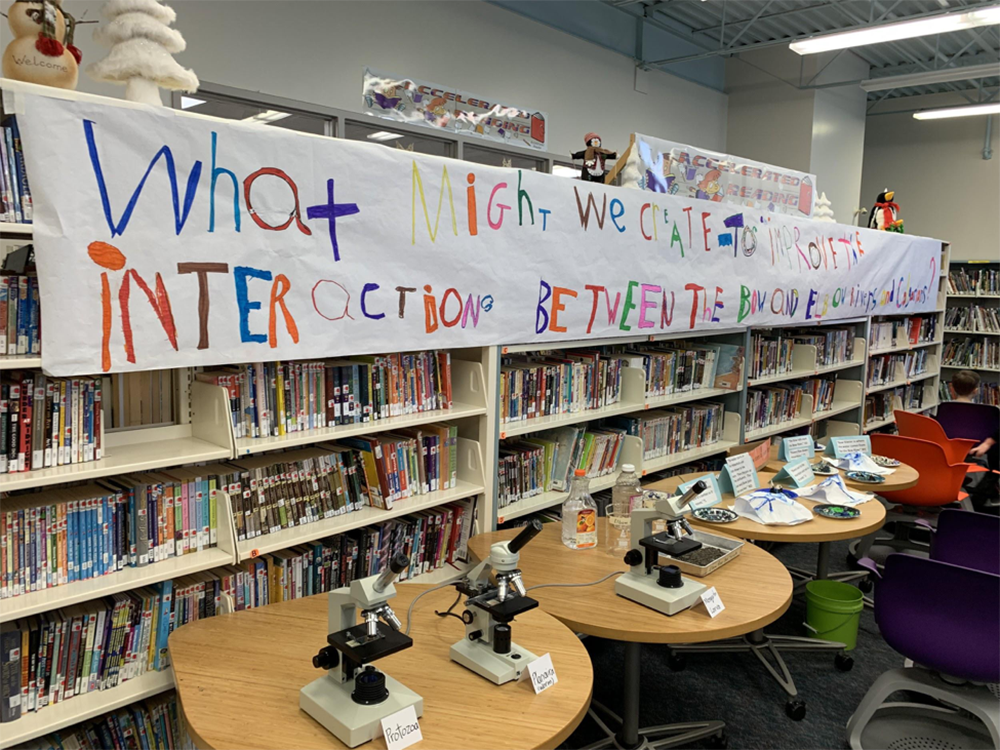
Community Awareness Event
We learned that most contaminants could be prevented by our own local actions. Together, we decided to plan an event to raise awareness in our community about pollutants in our stormwater.
While brainstorming for our event, we planned a storm drain display to be co-created by our students. Painting pictures of fish beside storm drains (as described by Yellow Fish Road) as a reminder that our stormwater travels to our rivers would also be fun! Unfortunately, an October snowfall put off this component until spring.
At the event, parents and the school community participated in data gathering and learned about actions they could take to reduce their ecological footprint. The question the children wrote was, “What can you do to decrease pollution in our rivers?” Eight options were presented to our guests as “I can” statements: “I can fix fluid leaks on my vehicle,” “I can clean up pet and animal waste,” and “I can use less fertilizer on my grass.” The students successfully created a way to collect data in support of our essential question and came up with 248 actions that promote healthy stormwater!
Also on display were examples of experiments, microscopes for viewing, and artistic representations of the source and flow of the rivers. Our dual robots were exhibited alongside the design thinking blueprints with Gallery Walk process exemplars. In addition, our models of the historic confluence, learning reflections and maker products were shown. Learning flowed authentically down the STREAM and pooled in a memorable PBL event reflective of our efforts to improve interactions with our rivers.
What We Learned
We found ourselves unprepared for the uneasiness of opening our project to be driven by student interests and ideas. Ambiguity is a partner in this process, with whom we had to learn to get comfortable. We recommend staying flexible, and adapting as the learning evolves.
This project and our experiences will be the first of many to learn from and share in our learning community. Co-designer and classroom teacher, Paula Munoz, wrote that the experience: “...provided the opportunity to see student learning in a different light, a light that lends to creation, ownership and inspiration for each student. Moving forward with the year, I will hold this experience as a model for genuine, engaged and integrated learning that is essential for my students.”
Want to learn more about PBL? Check out our books.

